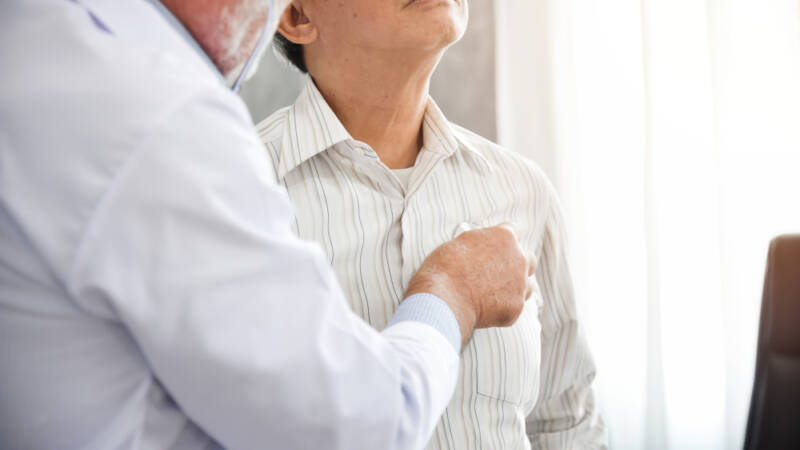Common Signs and Symptoms of Pneumonia

Streptococcus pneumoniae or pneumococcus is the pathogen most commonly associated with pneumonia. However, it is not the only bacterium that can make you sick with pneumonia, and bacterial pneumonia is not the only type of pneumonia that can affect you. Search online and keep reading to learn whether you may be at risk for pneumonia.
Pneumonia is a lung disease in which the alveoli (small air sacs that inflate and deflate with inspiration and exhalation) fill up with fluids and/or pus, making it difficult to breathe. It is an acute respiratory infection that represents 15% of deaths in children under 5 years old, but people of all ages can get it. Those who are elderly or are in poor health already are also more susceptible.
Causes of Pneumonia
Pneumonia can be induced by more than 30 kinds of germs or infectious agents, mostly bacteria (Streptococcus pneumoniae, Haemophilus influenzae), viruses (Respiratory Syncytial Virus or RSV), and endemic or opportunistic fungi (Pneumocystis jirovecii).
All of these germs cause community-acquired pneumonia (CAP), which is the most common type of the illness. However, there are other types including:
- Nosocomial pneumonia (hospital-acquired) – Acquired by patients that were initially hospitalized for other health issues. It involves bacteria that are more resistant to antibiotics.
- Healthcare-acquired pneumonia – Non-hospitalized patients that still have regular contact with healthcare centers (such as those residing in long-term care facilities or receiving outpatient treatment in hospitals) can contract antibiotic-resistant bacteria.
- Ventilator-associated pneumonia – Patients on ventilators can aspire bacteria and get pneumonia.
- Aspiration pneumonia – Food, drink, saliva, and vomit can contain bacteria and make you sick if you accidentally inhale them into your lungs. This is more common in people with swallowing problems (such as those with neurological conditions) or sedated patients.
Who’s At Risk?
Absolutely anyone can get pneumonia. However, it’s more common and more dangerous in those that are:
- Under two years old or over 65 years old
- Immunocompromised or malnourished
- Sick with other lung diseases or respiratory infections, chronic illnesses, colds, or the flu
- Exposed to certain chemicals, toxic gases, and air contaminants
- Heavy smokers
- Heavy drinkers
- Spending time in the hospital, particularly the ICU
Signs and Symptoms
The signs and symptoms of pneumonia are more or less severe depending on the germ that’s causing it, and the individual’s age, overall health, and risk factors. But in general, you look for these signs and symptoms:
- Chest pain, especially when coughing or breathing
- Persistent cough
- Fever, or in babies and elders, hypothermia
- Sweating and chills
- Shortness of breath, even while at rest
- Fatigue
- Headaches
- Gastrointestinal symptoms, such as nausea, vomiting, and diarrhea
- Loss of appetite (more common in children)
- Confusion (more common in the elderly)
It’s also important to know that newborns and infants sometimes show few or no symptoms while those who have a weak immune system often experience severe symptoms.
The Progression of Pneumonia
If untreated, pneumonia can be very serious and in some cases, even fatal. Common complications include the following.
- If the bacteria in your lungs enters the bloodstream (bacteremia), it can spread to other organs and cause septic shock or organ failure.
- When you can’t breathe properly and there is not enough oxygen in your blood, your kidneys, liver, and heart may be damaged or even fail.
- Lung abscesses can be part of a condition called necrotizing pneumonia, in which the lung tissue dies and forms little bags of pus that need to be drained
- Pleural disorders in which the thin membrane inside the lungs and chest cavity become inflamed (pleurisy) and fill with fluids (pleural effusion).
If you think you have pneumonia or you’re at risk of getting it, speak with your health care provider for treatment or prevention tips.